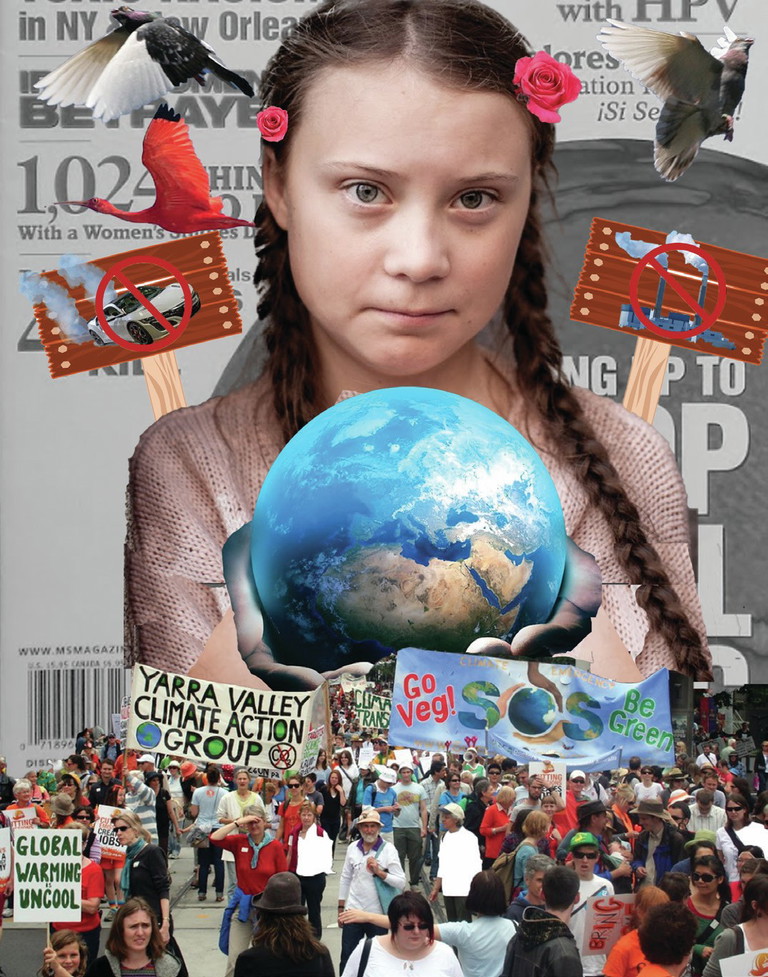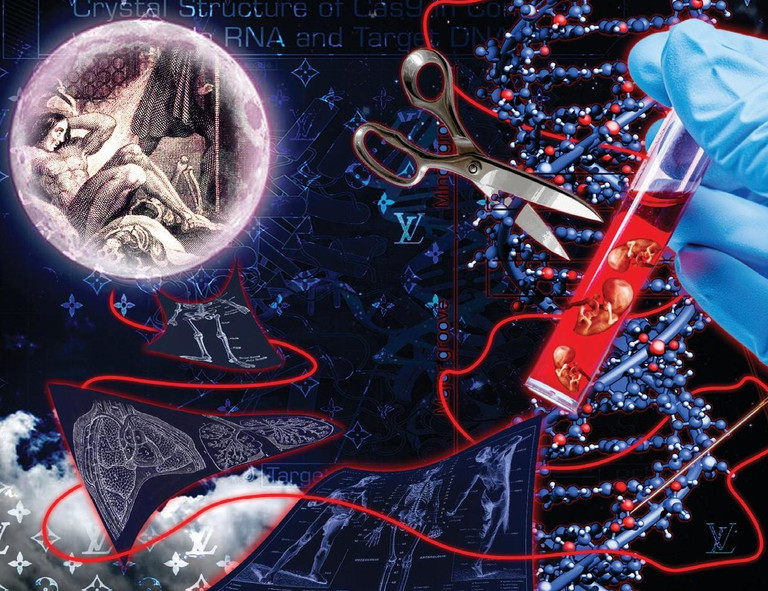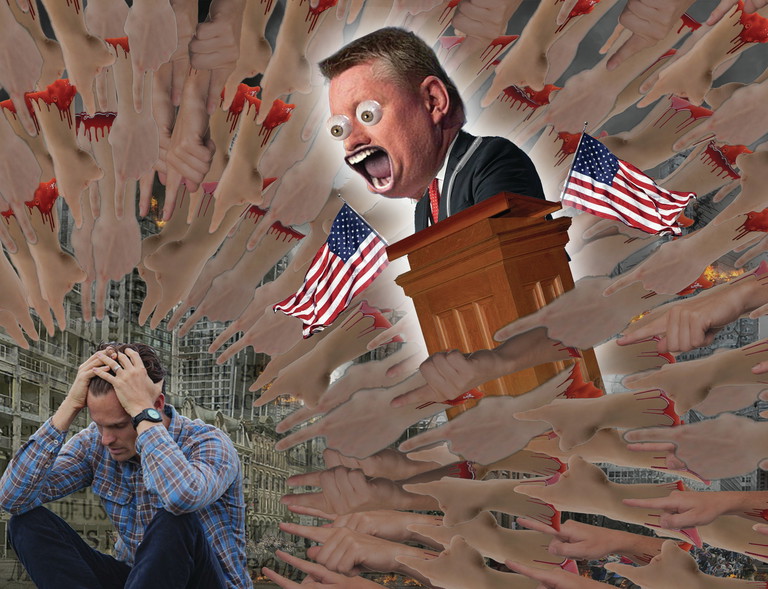HIGH SCHOOL

Jovan F., activism photomontage, grade twelve.
Courtney Casto
Activist art often elicits a knee-jerk response, and I’ve noticed that many art educators are understandably fearful of navigating controversial topics in their classrooms. Though today’s contentious educational climate can make these conversations difficult, I believe that asking young people what they think about tough subjects is more important today than ever before. Empowering students to interact with complicated social issues via the art-making process can unlock their creative potential, increase their engagement, and help them connect with the world around them.
Why Digital Art Activism?
Artists have a long history of making art that promotes social change, and John Dewey even noted the important correlation between education and civic participation all the way back in 1916. Contemporary artists—and students in general—must be well-versed in digital visual literacy to thrive in today’s rapidly evolving technological society. Digital art provides the perfect platform for raising awareness about important causes because many people already have access to the tools necessary to create and share it. The combination of activism, education, and digital art ser ves our students in a timeless yet contemporary manner.

Rowan C., The Modern Prometheus, grade twelve.
Lesson Overview
In this lesson, students will select and research a social, ecological, economic, religious, or political issue that interests them. They will use image-editing software to create a collage that raises awareness about their chosen cause.
I start this lesson by establishing ground rules around communication regarding sensitive topics and reinforcing that it’s always okay to disagree respectfully. I’ve taught various forms of this lesson for the last six years and have never had a heated argument unfold. I have, however, witnessed dozens of students offer incredibly insightful, passionate viewpoints and inspire true dialogue among their peers.
Brainstorming and Research
The preliminary brainstorming and research phase is key to unlocking creative potential and student engagement in this project. Start with a whole-group brainstorming activity and instruct students to create a master list of current events and global issues. Then ask students to choose two or three topics that resonate with them and conduct an online search to gather information. This information will provide inspiration for ideas and imagery to incorporate into studentsʼ work.
Empowering students to interact with social issues via the art-making process can unlock their creative potential and help them connect with the world around them.
Utilizing Creative Commons
Being an ethical digital citizen and developing contemporar y art skills requires an understanding of copyright laws. A great way to teach students about copyright and how it affects artists is to show them how to use Creative Commons. Students should access the Creative Commons search database (see Resource) to download photographic images that are relevant to their topic and licensed for reuse. They can store the images and licenses in a cloud folder such as Google Drive.
Digital Demonstrations
This lesson can be completed with any raster graphics editor, such as Adobe Photoshop. Free open-source alternatives include Photopea and Pixlr. Whichever application you decide to use with students, it’s important to explain how the layers function and to model various collage techniques. I upload a practice image for students to download and instruct them to follow along with me as I explain how to use various selection tools. For teachers who are new to digital art, there are numerous tutorials for image-editing software available on YouTube.

Gavin D., Chaos Out of Order, grade eleven.
Studio Time and Wrap-Up
After students collect their imagery and become familiar with digital image editing, they can begin creating their collages. The creation typically takes students three to five class periods that are forty-five minutes long. When they are finished, students post their images online for a class critique. Padlet offers a great online critique space. The critique is important because it encourages students to become better art analysts and to learn how to communicate with their peers about difficult topics. Students can reach an even broader audience by posting their work to a public website or printing and distributing it within their local communities.
Reflections
I’ve observed that digital art can be freeing for many students because it takes the pressure off of making mistakes and allows for creative experimentation. Students can quickly make design changes without permanently compromising the integrity of their work, and the possibilities of digital art-making are virtually limitless.
My students routinely submit multiple versions of their collages without being prompted because they enjoy creating variations. Combining these digital aspects with a powerful artistic genre like activist art helps students recognize that their opinions matter and that their artistic voices can initiate social change.
NATIONAL STANDARD
Connecting: Synthesize and relate knowledge and personal experiences to make art.
RESOURCE
Courtney Casto is an art teacher at Cornerstone Charter Academy in Belle Isle, Florida. ccasto@ufl.edu